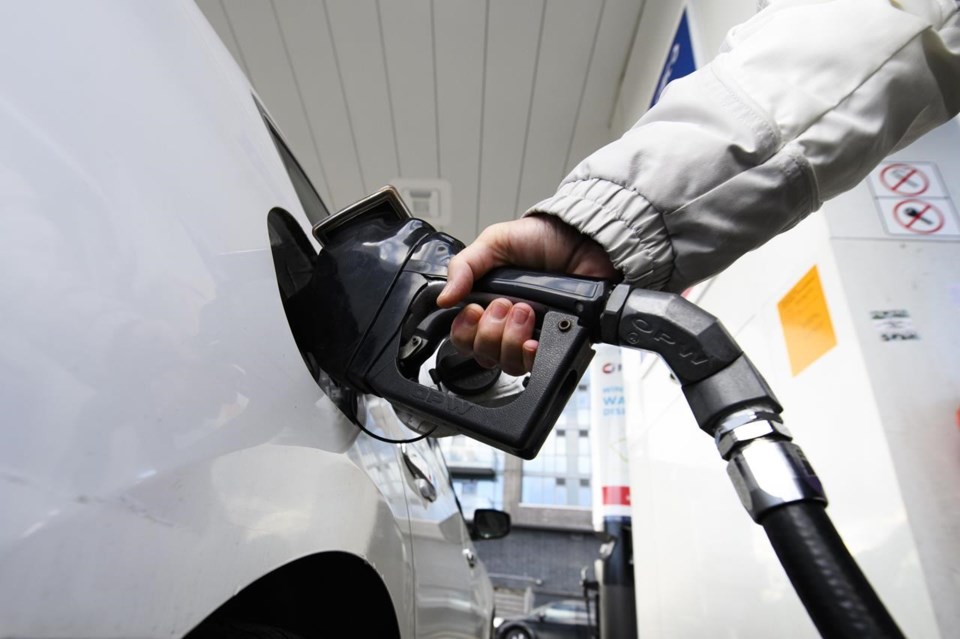OTTAWA — The national price on pollution will rise by $15 per tonne today. Here's some questions answered about what this could mean for you.
Who pays the carbon price?
Canada has two different carbon pricing programs — one for big industry where companies pay the price on a share of their actual emissions, and a consumer carbon levy which is applied to fossil fuel purchases. The consumer levy affects individuals, small and medium-sized businesses, First Nations, as well as public-sector operations such as hospitals, universities, schools and municipalities.
The price change on April 1 affects the consumer levy, which applies in every province and territory except British Columbia, Quebec and Northwest Territories.
B.C. and Northwest Territories both have their own, very similar carbon charge for consumers. Quebec has a cap-and-trade system that is quite different, but is considered equivalent by Ottawa to what the federal price both costs and cuts in terms of emissions.
LETTER: Why it makes sense to put a price on carbon
What is the consumer carbon levy applied to?
The fuel charge is added to the price of more than 20 different fuel sources that produce greenhouse gas emissions when burned for energy, including gasoline, propane, diesel and natural gas. The additional cost to each fuel depends on how many greenhouse gases are produced when that fuel is burned to make energy.
A litre of diesel produces more carbon dioxide than a litre of gasoline, for example, so the carbon price is higher on a litre of diesel than it is on gasoline.
What is this increase going to do to the price of fuel?
The impact will be similar in all provinces but Quebec.
Gasoline: Going from $65 per tonne to $80, means the carbon price on a litre of gasoline will now be 17.6 cents per litre, up 3.3 cents per litre from before. That means filling a 50 litre tank from empty will cost about $8.80 in carbon price, about $1.65 more than before.
Diesel: As of today the price for a litre of diesel will include 21.39 cents in carbon price, up from 17.38 cents.
Propane: The price for propane will now include 12.38 cents a litre in carbon price, up from 10.08 cents. A standard 20-pound barbecue propane tank will cost about $2.20 in carbon price to fill, compared with $1.78 over the last year.
Natural gas: On average in Canada, households use about 2,280 cubic metres of natural gas in a year, mostly for heat. At $80 per tonne, the carbon price will add 15.3 cents to a cubic metre of natural gas, up from 12.4 cents previously. That amounts to an annual carbon price bill for natural gas of about $347 on average, compared with $282 over the last year.
Food and clothing and other goods: There are indirect costs of carbon pricing, as companies that pay the price themselves increase the cost of their goods and services to keep pace. The amounts vary by industry, but Statistics Canada estimated that carbon pricing increased the price of food by about 0.3 per cent and the price of clothes by two per cent since its inception. The effect of the latest increase has yet to be determined.
How much will the Canada Carbon Rebate help?
The provinces that pay the federal carbon price also receive the federal rebate. B.C. and Northwest Territories in turn provide their own rebates that are slightly different.
B.C.'s rebate, for example, is income based, and about one-third of all households in the province don't qualify for it.
The federal rebate, which is deposited or mailed out four times a year, is divided among households based on family size, not by income. Each year Environment and Climate Change Canada calculates the expected revenues from carbon pricing in each province, and by law has to return 90 per cent of those revenues in rebates. Part of the remaining 10 per cent goes to increase rural resident rebates by 20 per cent. Some of the rest is earmarked to help businesses become more fuel efficient, but those programs have been very slow to roll out. Most businesses haven't received anything in the five years since carbon pricing began.
The rebates increase as the price increases, however this year many households in the Atlantic provinces won't see an increase. That's because almost one-third of households in those provinces use heating oil and since October have been exempted from paying the carbon price. That reduction is reflected in the rebate amounts.
The rebates vary because carbon pricing totals vary based on things like heating use and driving distances. Alberta and Saskatchewan, for example, typically use more natural gas for heat per households than in Ontario or Manitoba.
The next rebate payment is due on April 15. Here are the quarterly amounts, by province, for an individual, a couple, and a family of four. In a single parent households, the first child is treated the same as a spouse for the rebate amount.
Rural residents, who tend to drive longer distance, are to receive 20 per cent more.
Yukon and Nunavut pay the federal carbon price but have their own unique rebate programs.
Alberta:
Single: $225 Couple: $337.50 Family of four: $450
Saskatchewan:
Single: $188 Couple: $282 Family of four: $376
Manitoba; Single: $150 Couple: $225 Family of four: $300
Ontario:
Single: $140 Couple: $210 Family of four: $280
New Brunswick:
Single: $95 Couple: $142.50 Family of four: $190
Nova Scotia:
Single: $103 Couple: $154.50 Family of four: $206
Prince Edward Island:
Single: $110 Couple: $165 Family of four: $220*
*All households in P.E.I. are considered rural and the rebates for all include the 20 per cent top up.
Newfoundland and Labrador:
Single: $149 Couple: $223.50 Family of four: $298
This report by The Canadian Press was first published April 1, 2024.
Mia Rabson, The Canadian Press
